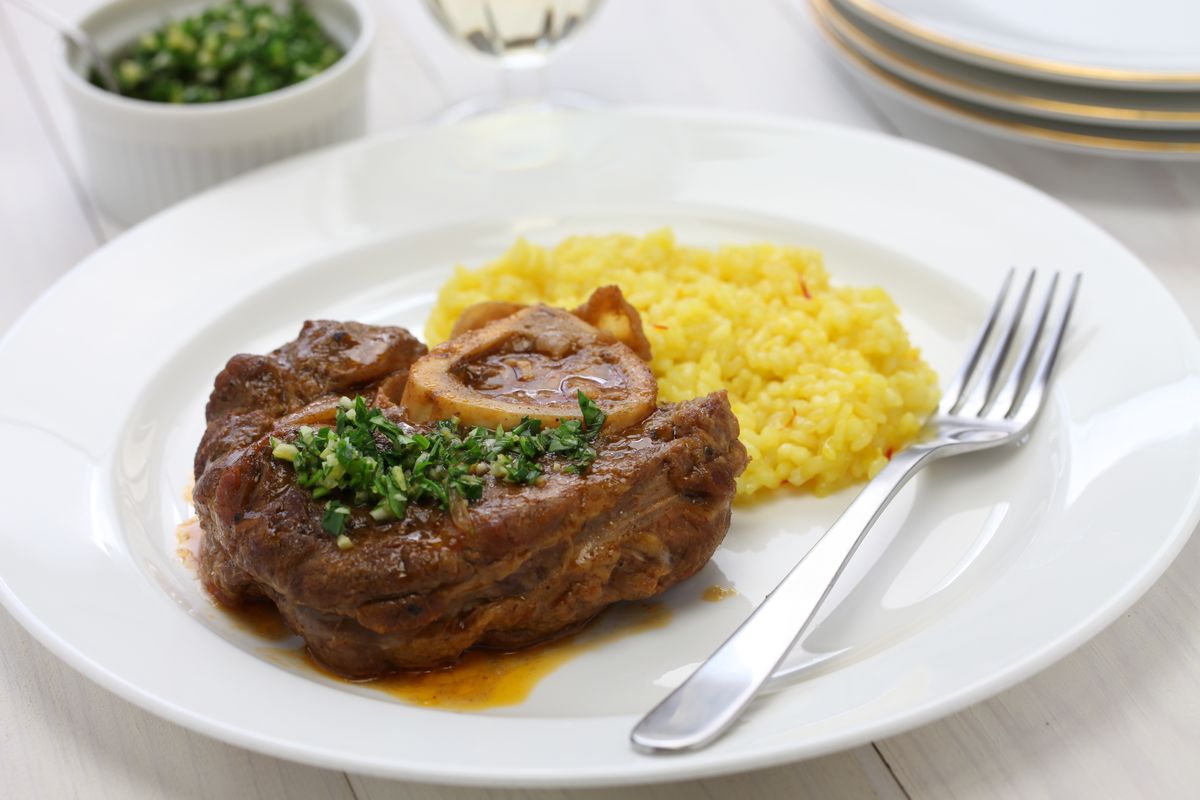Recipes
Ossobuco: the tenderness of Milanese cuisine

An inseparable friend of saffron risotto, ossobuco is a second course that has its roots in the Milanese culinary tradition. Let's find out what it is, how to do it and all the curiosities.
A perfect second course but also an indissoluble accompaniment to the well-known saffron risotto: ossobuco is a transversal cut of the shank of dairy veal usually cooked in stew. Known as “ òs büs ” in the Milanese dialect, in December 2007, it obtained the Municipal Designation (De.Co) of the Municipality of Milan.
Although it requires slow cooking , it is not a complex dish to make. What makes it truly special is its tenderness due to both the cut and its cooking method. Traditionally, the original recipe calls for it to be "white" also because the tomato was only imported into Europe at a later time. All we have to do is find out how it's done!

Preparation of ossobuco Milanese style
- Prepare the flour in a bowl and flour the osso buco.
- Take a fairly large pan and let 10 g of butter and half an onion sauté over a low heat.
- Add the meat and let it brown on both sides and, after a few minutes, add the wine. When it has completely evaporated, add pepper and salt.
- At this point add a little previously prepared meat broth , close with a lid and lower the heat. Leave to go for 1 hour and a half, continuing to stir and adding more broth if necessary.
- In the meantime, on a cutting board and with the help of a sharp knife, prepare chopped garlic, grated lemon zest and parsley (called gremolada ). Just before turning off the ossobuco, add the chopped mixture to the pan and let it cook for a few more minutes.
- Also add the remaining butter: once everything is melted and mixed together, our ossobuco will be ready!
Some do not include the gremolada on the plate but serve it directly on the table , offering it raw. We can only recommend serving it after a good saffron risotto !
What is osso buco and what are its origins
Ossobuco is an approximately 4cm thick slice of beef characterized by the presence of bone. More precisely, it is a cut obtained from the segmentation of the shank of dairy veal. The presence of the bone ensures unparalleled tenderness, itself guaranteed by the fatty presence of the bone marrow.
Its origins are not known, however the first evidence of this type of cutting and cooking dates back to the Middle Ages , which is why the original recipe does not include tomato, an ingredient not yet known in Europe at the time. The true diffusion of the dish occurred at the end of the 19th century when Artusi , the father of Italian gastronomes, included this recipe in Science in the Kitchen and the Art of Eating Well , the first recipe book in the history of Italian cuisine.
The nutritional characteristics and calories of osso buco
Nutritionists struggle to provide precise indices regarding the nutritional aspects of osso buco as they depend so much on the cut made, on the age of the animal and also on the presence or absence of marrow , which constitutes the mainly lipid part of the cut. However, osso buco confirms itself as an essential source of proteins and lipids; it is rich in iron and potassium and contains a large quantity of vitamin PP .
Every 100 g there are approximately 175 kcal, however this should not deceive us: a portion of osso buco usually weighs around 350 g.
storage
Do you have your shanks ready? So don't make them wait and enjoy them hot and with that beautiful sauce that forms during cooking. if you don't finish them, know that you can store them in the refrigerator for about 1 day , inside a container with an airtight lid. We do not recommend freezing in the freezer.
Riproduzione riservata © - WT











